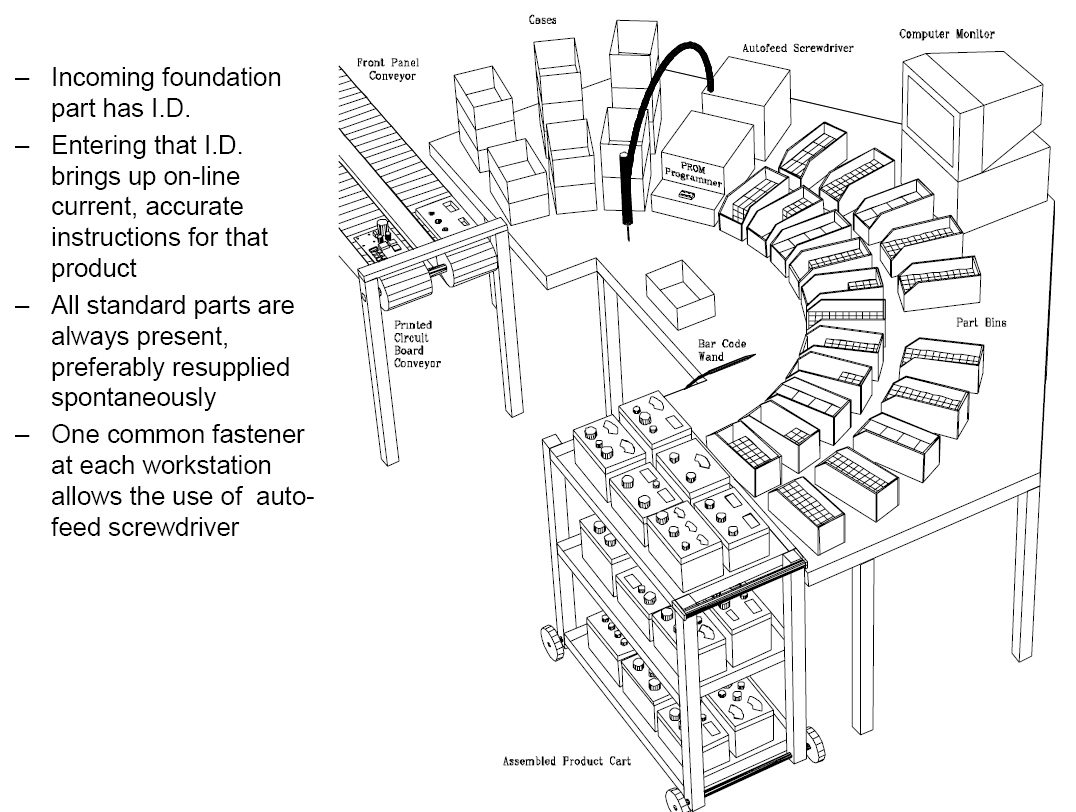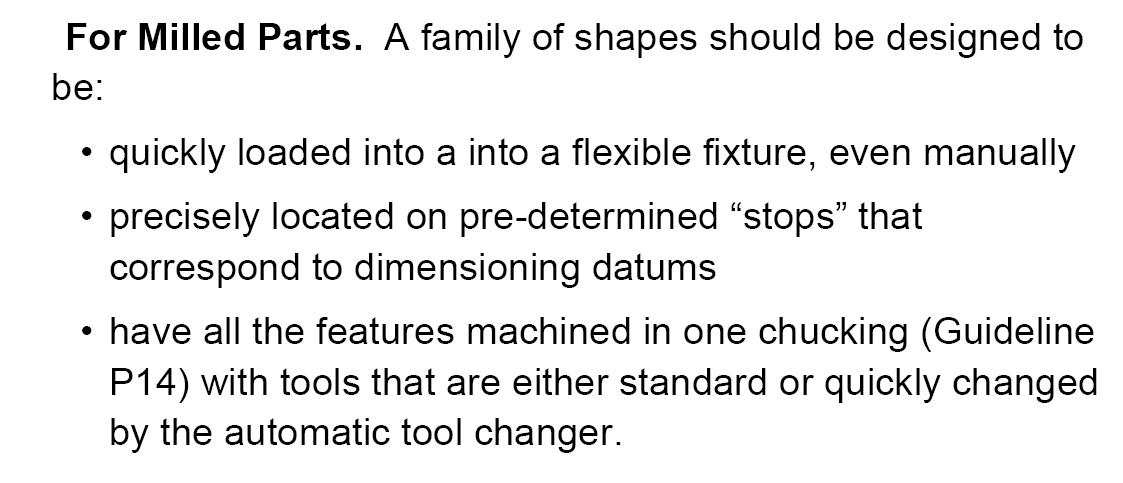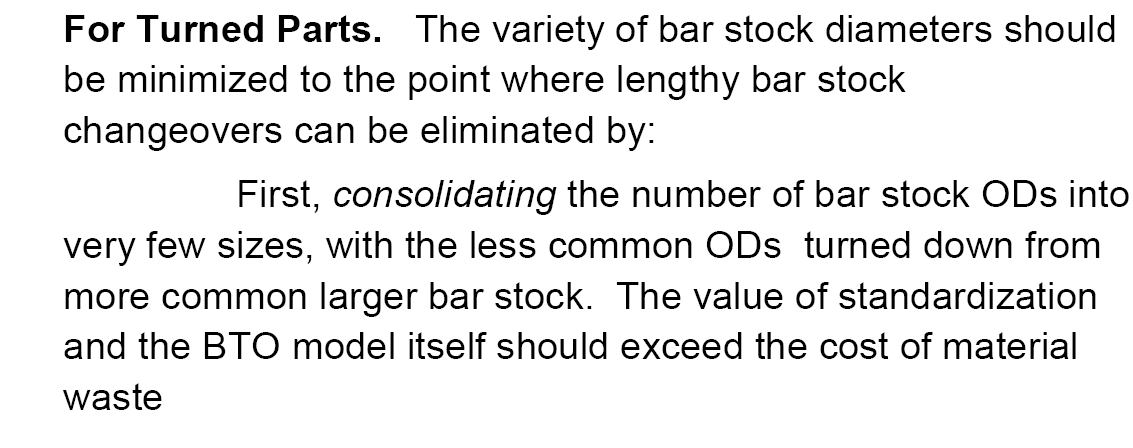A "platform" is not just adjacent pages in a catalog or on web-site
Product families must be based on all four of the
following criteria:
IMPLEMENTATION APPROACH

The forthcoming 2019 Second Edition of the author's DFM Book will show how building families of products on-demand can cut this much overhead costs:
Cut material overhead cost to1/10 for standard parts based on surveys of Procurement managers:
See opening page of Chapter 5: “Standardization” in the definitive book on Design for Manufacturability
Cut raw materials inventory down to /10 cost using:
Spontaneous Supply Chains,” Chapter 7, in the 512 page BTO book which starts with a 60 page Summary
Cut work-in-process (WIP) inventory Cost to 1/10 the usual cost , which can cost more than profits! See: “Design for Lean and Build-to-Order:” Chapter 4 in the author's DFM book, now translated into Chinese
Cut finished goods inventory Cost /10 of Mass Production cost by building all platform products to-Order "on-demand" without needing forecasted inventory. : See:
http://www.build-to-order-consulting.com/ or
"Build-to-Order & Mass Customization," the most thorough book written on Build-to-Order* See Overview of Inventory Reduction article at:
http://www.build-to-order-consulting.com/inventory_reduction.htm
With family products savings 10 times these overhead costs, those family products
could come close to making the case they not be charged any overhead charges at all!When the rest of the products can be build to-order in families,
then a total-cost based cost system will automatically assign all products proportionally less overhead cost.
A "platform" is not just adjacent pages in a catalog or on web-site
Product families must be based on all four of the
following criteria:























FLEXIBLE MANUAL ASSEMBLY


Note that when asked to deliver parts “on demand,” suppliers
will probably try to ship from their inventory











So if the existing production operations and supply chains can
not quickly
and cost-effectively build product families, the product families and their
processes
need to be concurrently engineered to make the product family strategy viable.









For more on BTO&MC principles see the book, Build-to-Order & Mass Customization
For an illustrated example of cellular manufacture for turned parts, go the bottom of the page at the Flexible Manufacturing page at http://www.build-to-order-consulting.com/flex-mfg.htm
Right-sized machine can
form complete mini-lines, in which no changeovers
are needed. The economics are
different with versatility and setup elimination
stressed over utilization.

Mass Customization
is the ability to quickly and efficiently build-to-order customized products.
It uses all the techniques presented so far
for the build-to-order of standard products and extends that to custom products.
These products can be customized for individual
customers or niche markets, such as versions optimized for certain market
segments, industries, regions, or countries.
For a secure enquiry form, go to the secure site: form (design4manufacturability.com)
These are the general principles. Pass around this article or URL to educate and stimulate interest
In customized seminars and webinars, these principles are presented in the context of your company amongst designers implementers, and managers, who can all discuss feasibility and, at least, explore possible implementation steps
In customized workshops, brainstorming sessions apply these methodologies to your most relevant products, operations, and supply chains.
Call or email about how these principles can apply to your company:
Dr. David M. Anderson, P.E., CMC
fellow, American Society of Mechanical Engineers
www.design4manufacturability.com
phone: 1-805-924-0100
fax: 1-805-924-0200
e-mail:
anderson@build-to-order-consulting.com
copyright © 2021 by David M. Anderson
Book-length web-site on Half Cost Products: www.HalfCostProducts.com
[DFM Consulting] [DFM Seminars] [DFM webinars] [DFM Books] [Credentials] [Clients] [Site Map]
[DFM article] [Half Cost Products site] [Standardization article] [Mass Customization article] [BTO article] [Rationalization article]